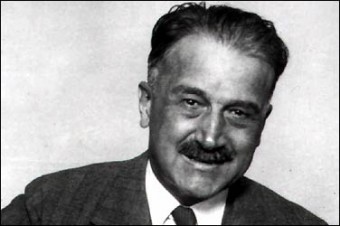Its A Wonderful Life: The Real Life George Bailey
From Today I Found Out:
Today I found out about the real life “George Bailey” (It’s a Wonderful Life), who founded the Bank of Italy which became Bank of America.
The man was A.P. Giannini who was said to be who Capra modeled the
character of George Bailey as well as the bank president in Capra’s 1932
movie, American Madness,
after. At the age of 14, Giannini left school and began working with
his step father, Lorenzo Scatena, in the produce industry as a produce
broker. By the time he was 31, he was able to sell much of his interest
in this company to his employees and had planned to retire. However,
one year later, he was asked to join the Columbus Savings & Loan
Society, which was a small bank in North Beach, California.
 Once he joined up, he found that almost nobody at the Savings &
Loan, nor other banks, were willing to give loans to anyone but the rich
or those owning businesses. At first, Giannini attempted to convince
the other directors at the Savings & Loan to start lending to
working class citizens, to give them home and auto loans, among other
things. He felt that working class citizens, though lacking in assets
to guarantee the loan against, were generally honest and would pay back
their loans when they could. Further, by loaning them money, it would
allow working class citizens to better themselves in ways they would not
have been able to do without the money lent to them, such as being able
to buy a home or to start a new business. He was never able to
convince the other directors to begin lending to the working class.
Once he joined up, he found that almost nobody at the Savings &
Loan, nor other banks, were willing to give loans to anyone but the rich
or those owning businesses. At first, Giannini attempted to convince
the other directors at the Savings & Loan to start lending to
working class citizens, to give them home and auto loans, among other
things. He felt that working class citizens, though lacking in assets
to guarantee the loan against, were generally honest and would pay back
their loans when they could. Further, by loaning them money, it would
allow working class citizens to better themselves in ways they would not
have been able to do without the money lent to them, such as being able
to buy a home or to start a new business. He was never able to
convince the other directors to begin lending to the working class.
Not to be dissuaded, he then set out to start his own bank. With
$150,000 raised from various friends and family, Giannini founded the
Bank of Italy in 1904, which would be a bank specializing in loaning
money to the common man. The first Bank of Italy branch was in a
converted saloon across the street from the Savings & Loan he had
formerly been a member of. The assistant teller at the Bank of Italy
was the former bartender of that very saloon.
He then went about educating the working class on what a bank does
and how one could help them. He then made a practice of not offering
loans based on how much money or equity a person had, but based
primarily on how he judged their character. Within a year, Bank of
Italy had over $700,000 in deposits from these working class
individuals, which is somewhere around $15-$20 million today. By the
middle of the 1920s, it had become the third largest bank in the United
States.
Two years after the Bank of Italy was founded, the great San Francisco earthquake of 1906 occurred,
which was a 7.7-8.25 earthquake that resulted in 80% of the city being
destroyed, over 3,000 deaths, and around 200,000-300,000 of the city’s
410,000 population left homeless, because of the earthquake and
subsequent fires.
The Bank of Italy managed to be the only bank able to open back up
directly after the earthquake, despite the fact that the bank building
itself was unusable. Directly after the earthquake happened in the very
early hours of the morning, Giannini went and sifted through the rubble
of his building and gathered $2 million into a garbage man’s wagon,
owned by Giobatta Cepollina whose son would go on to work for Bank of
America because of a promise made by Giannini to Cepollina in exchange
for use of his wagon. (Cepollina’s son was able to retire from Bank of
American at 41.)
After gathering the money, Giannini then took it outside of town, covered in garbage to protect it.....MORE
Once he joined up, he found that almost nobody at the Savings & Loan, nor other banks, were willing to give loans to anyone but the rich or those owning businesses. At first, Giannini attempted to convince the other directors at the Savings & Loan to start lending to working class citizens, to give them home and auto loans, among other things. He felt that working class citizens, though lacking in assets to guarantee the loan against, were generally honest and would pay back their loans when they could. Further, by loaning them money, it would allow working class citizens to better themselves in ways they would not have been able to do without the money lent to them, such as being able to buy a home or to start a new business. He was never able to convince the other directors to begin lending to the working class.